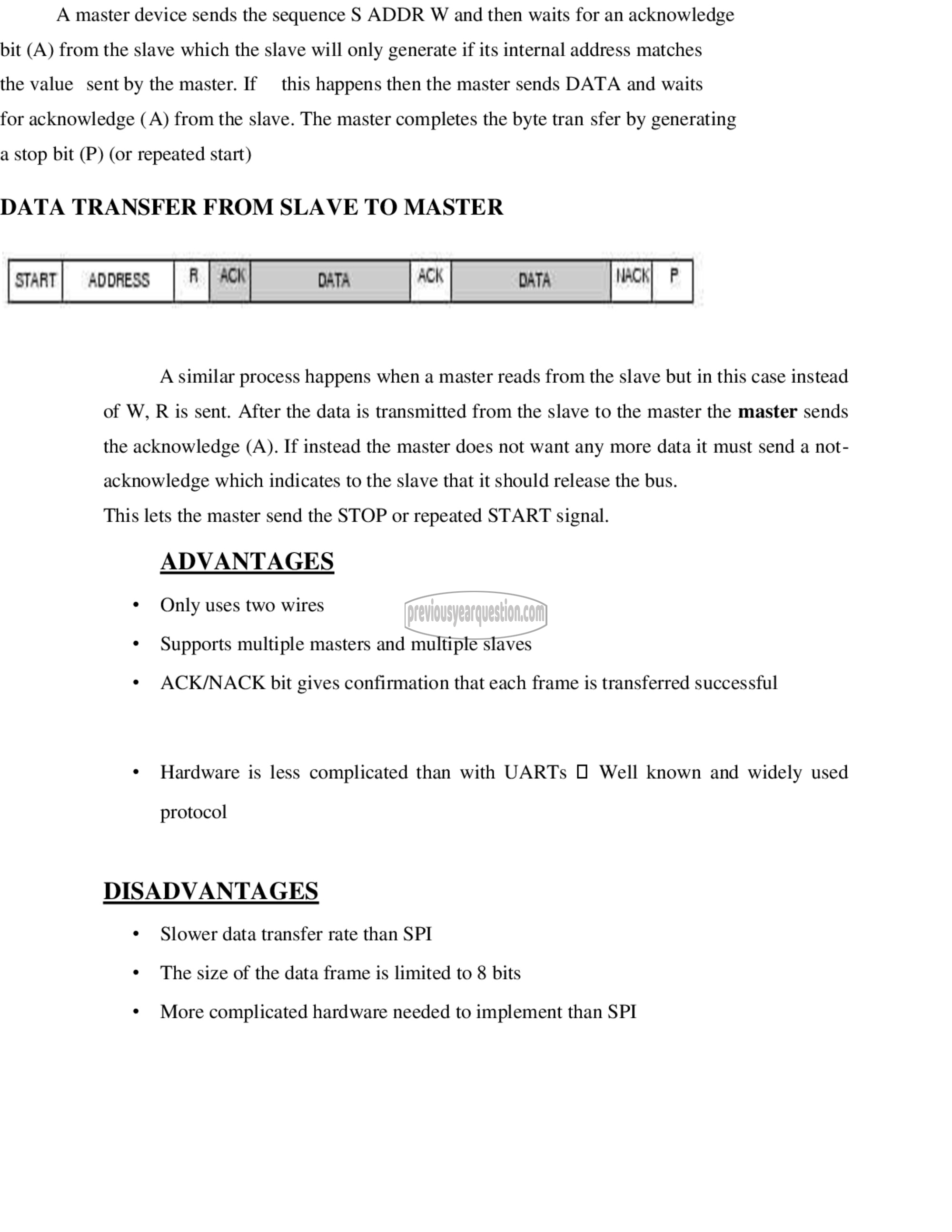APJ ABDUL KALAM TECHNOLOGICAL UNIVERSITY Previous Years Question Paper & Answer
Semester : SEMESTER 6
Subject : Embedded System
Year : 2018
Term : MARCH
Scheme : 2015 Full Time
Course Code : EC 308
Page:15
A master device sends the sequence S ADDR W and then waits for an acknowledge
bit (A) from the slave which the slave will only generate if its internal address matches
the value sent by the master. If = this happens then the master sends DATA and waits
for acknowledge (A) from the slave. The master completes the byte tran sfer by generating
a stop bit (P) (or repeated start)
DATA TRANSFER FROM SLAVE TO MASTER
ADDRESS
A similar process happens when a master reads from the slave but in this case instead
of W, R is sent. After the data is transmitted from the slave to the master the master sends
the acknowledge (A). If instead the master does not want any more data it must send a not-
acknowledge which indicates to the slave that it should release the bus.
This lets the master send the STOP or repeated START signal.
ADVANTAGES
٠ Only uses two wires
٠ Supports multiple masters and multiple slaves
٠ ACK/NACK bit gives confirmation that each frame is transferred successful
Hardware is less complicated than with UARTs பி Well known and widely used ٭
protocol
DISADVANTAGES
٠ Slower data transfer rate than SPI
¢ The size of the data frame is limited to 8 bits
* More complicated hardware needed to implement than SPI
